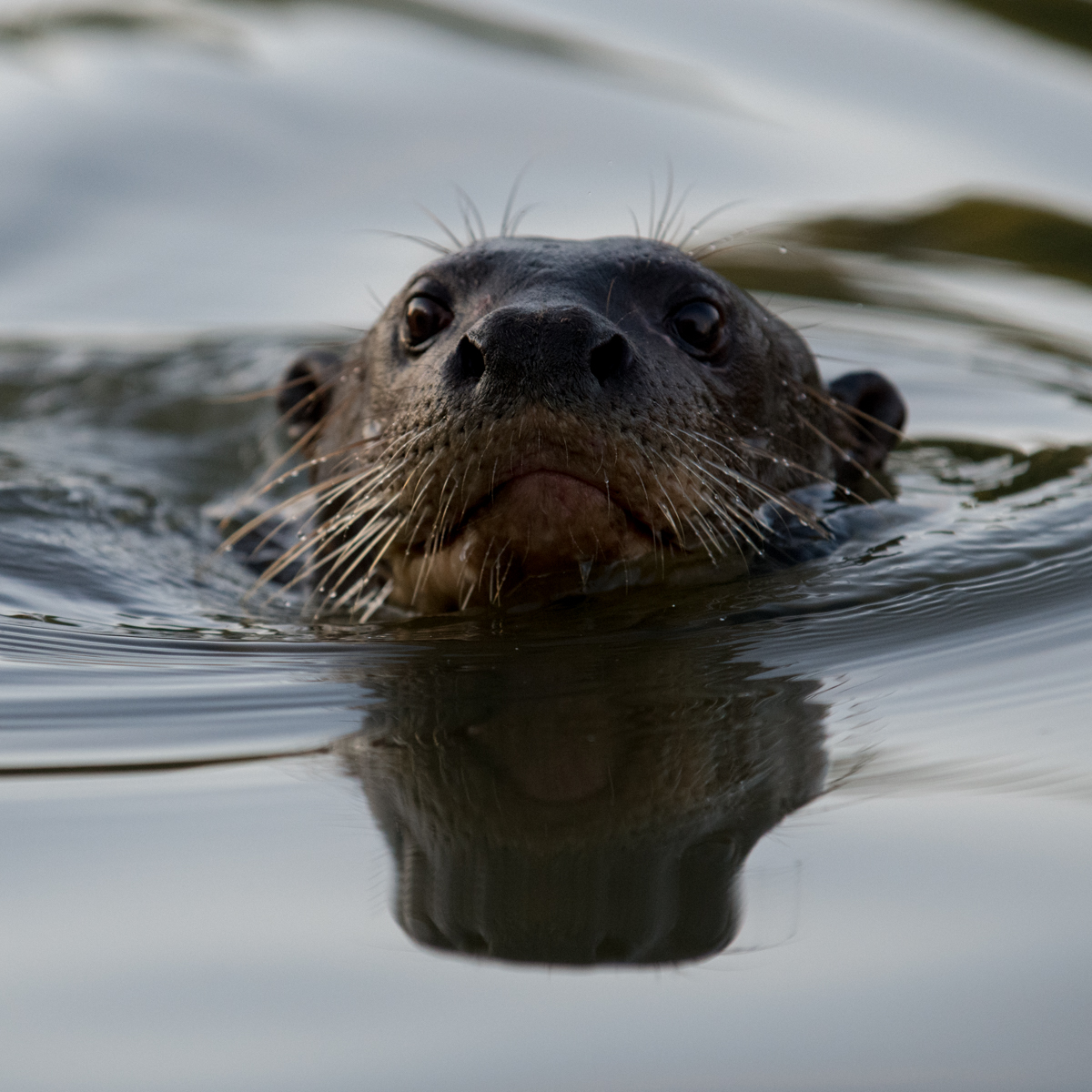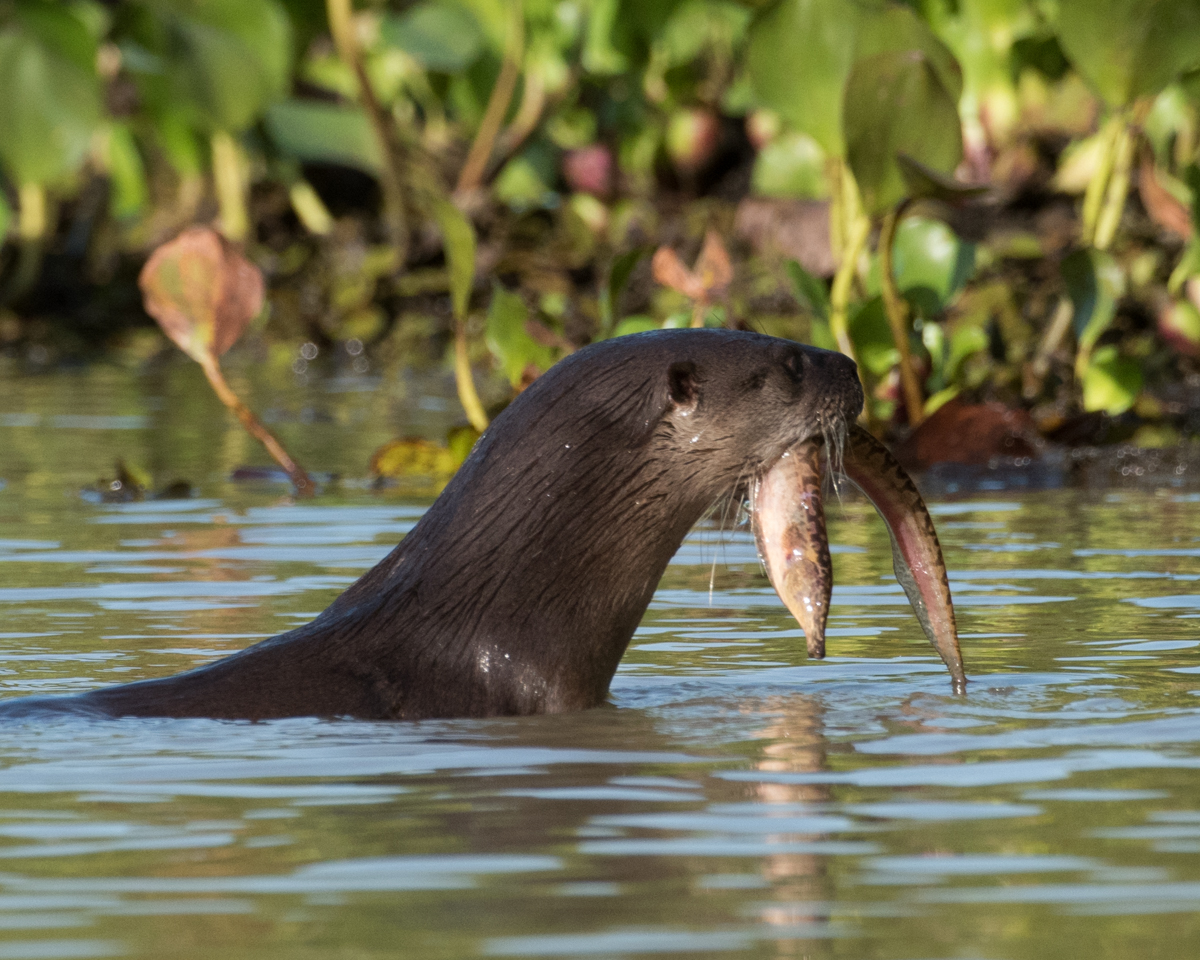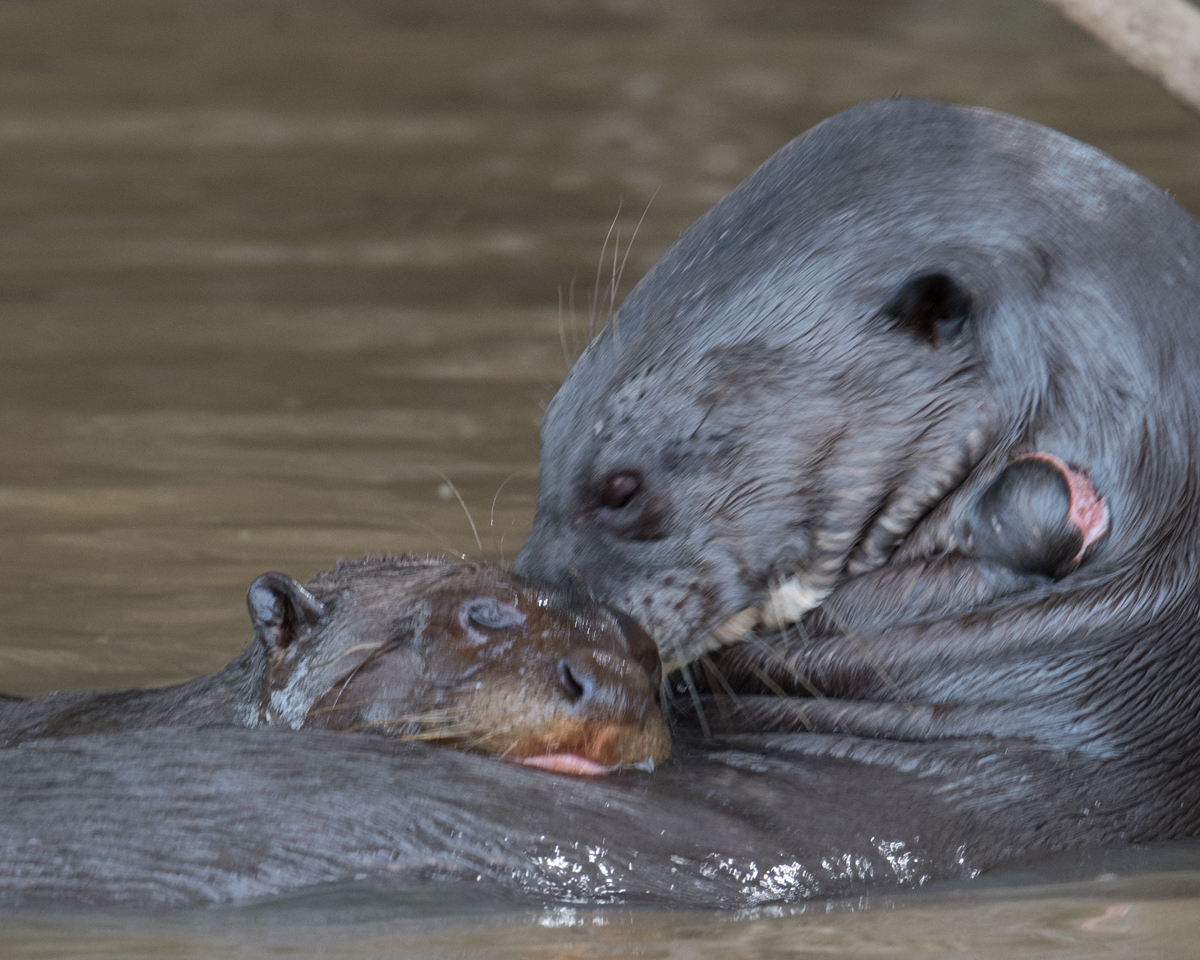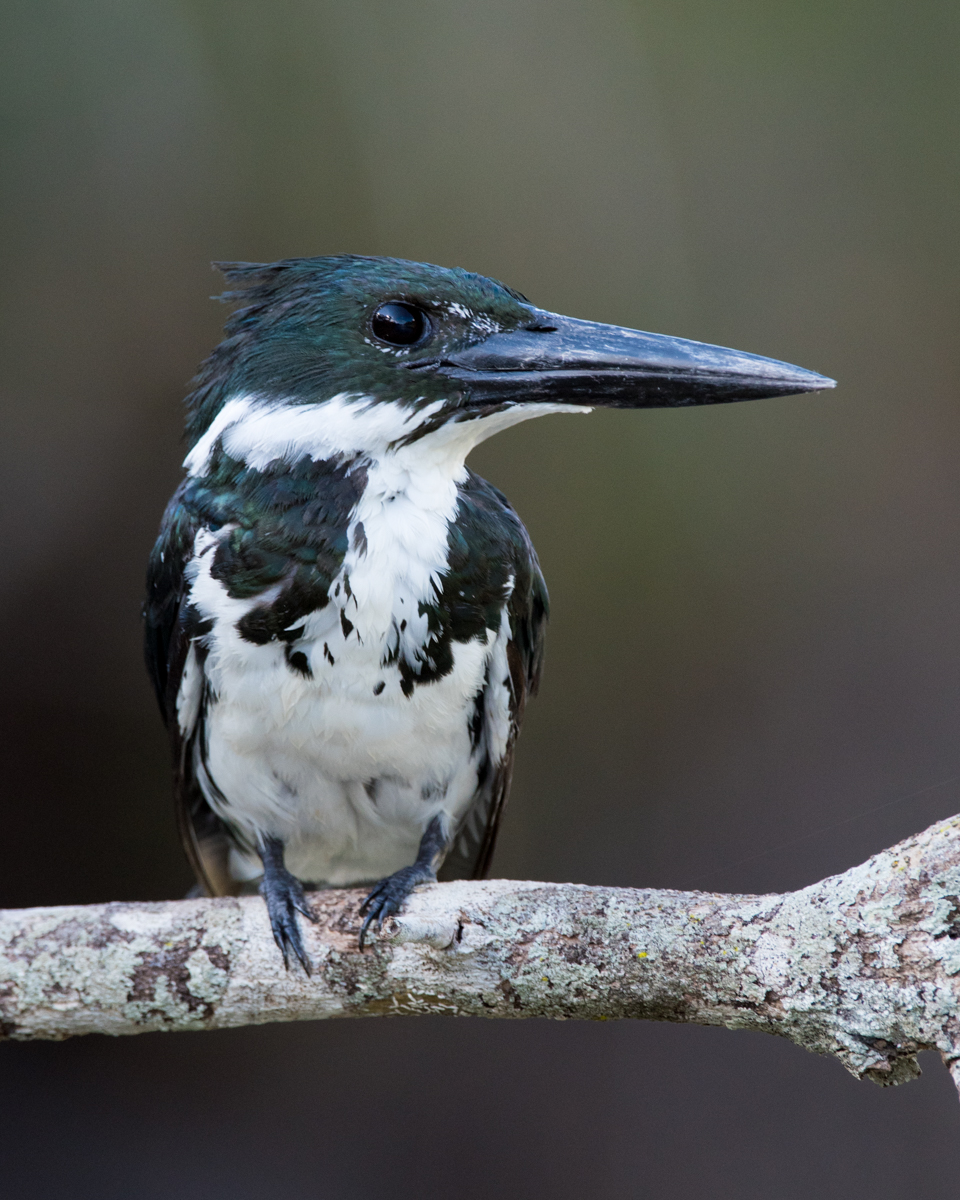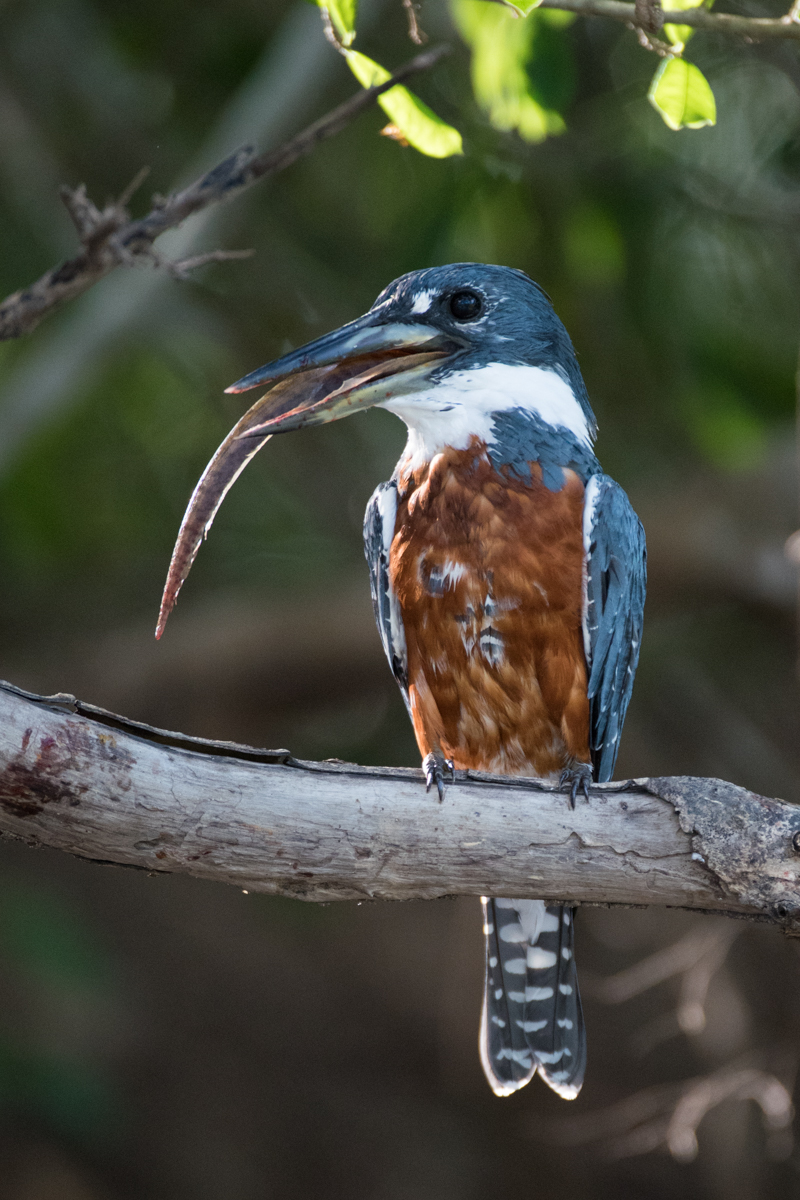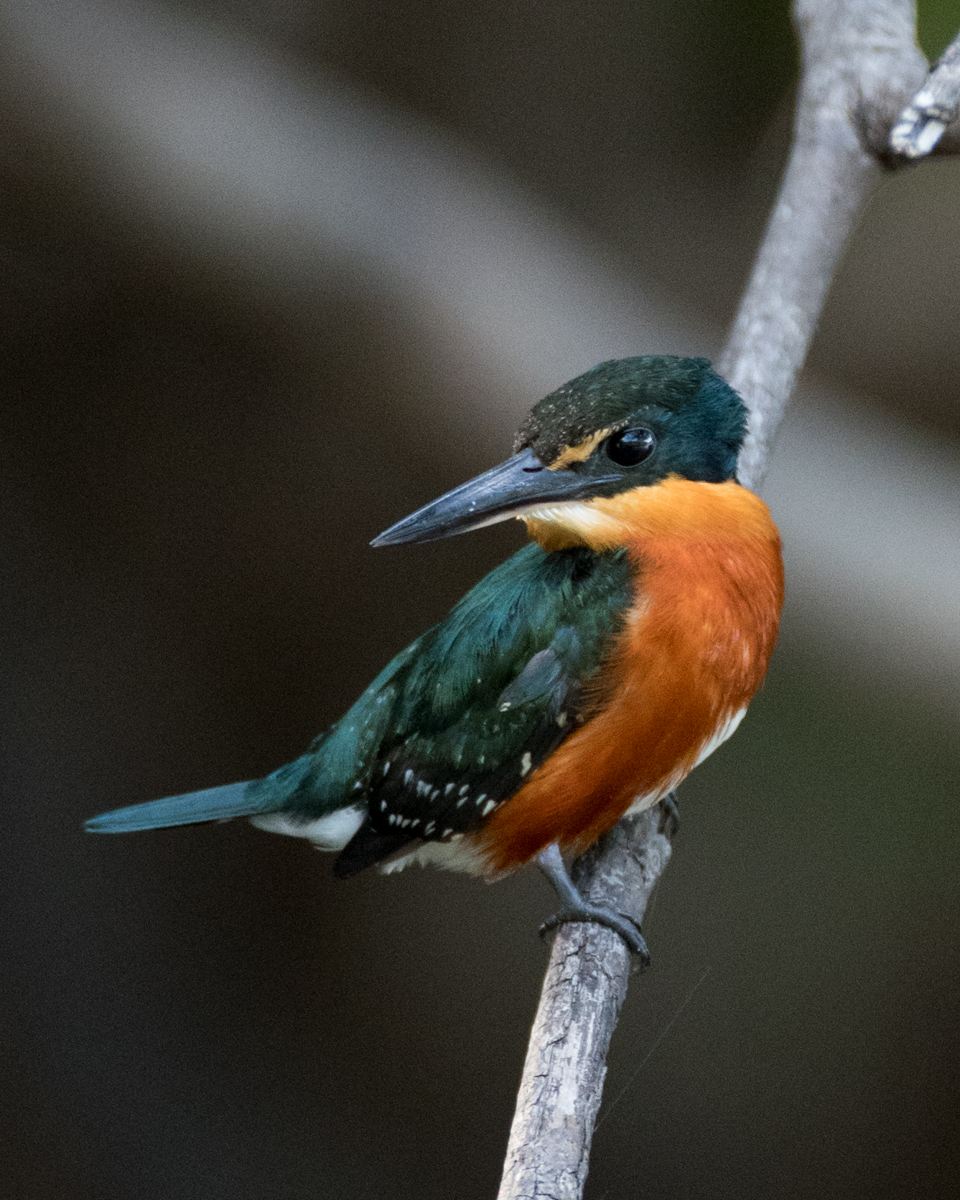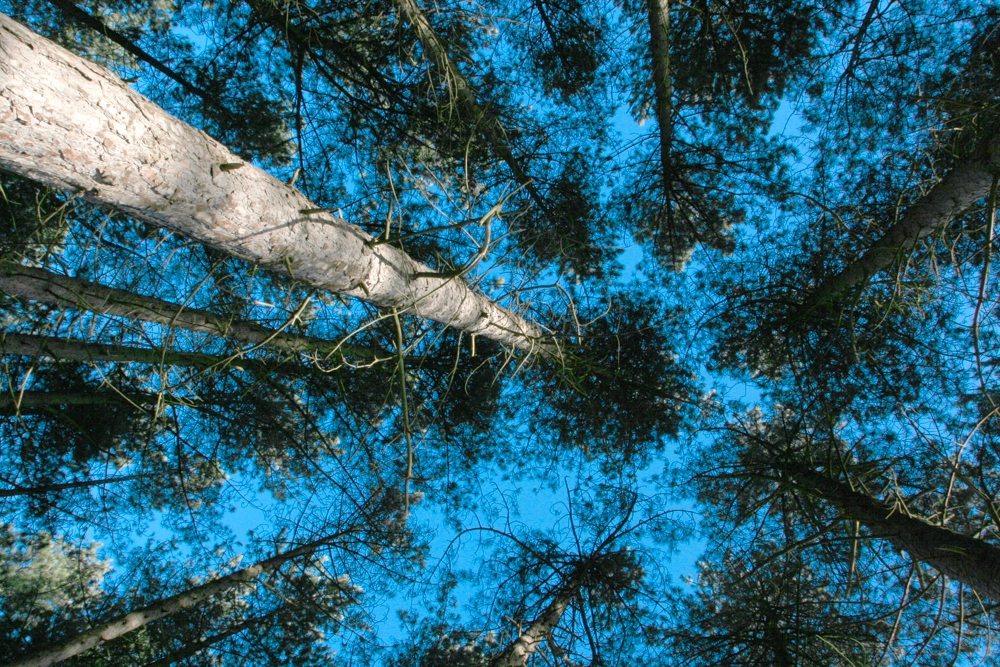The Wildlife Jewel of South America
The rivers provide perfect corridors for the jaguars to move in search of caiman and capybara, their main prey species. The vegetation is so dense it is very difficult to go anywhere else quickly. This is the best place to observe Jaguars any where in the world, or so the reputation goes.
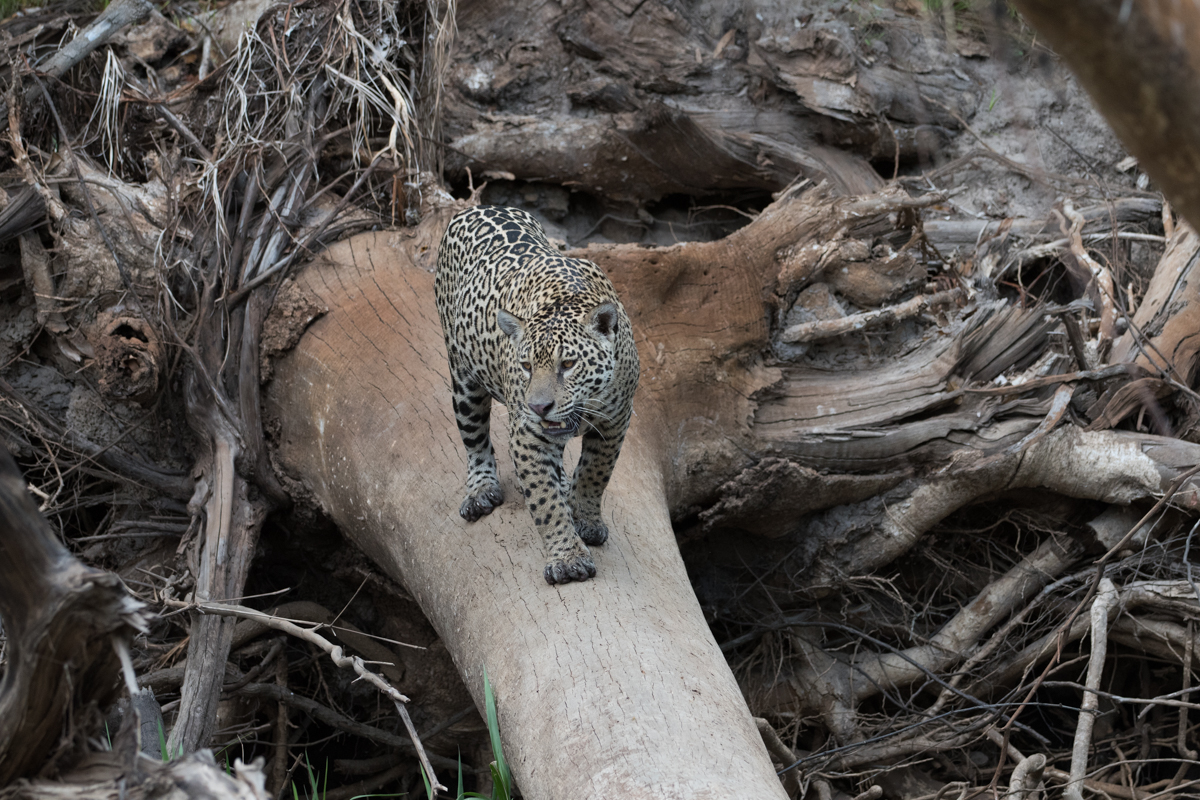

Finding jaguars in the Pantanal needs a trained and expert eye. I am working with biologist and wildlife guide Marco who surveys the riverbank and explains that windows in the vegetation offer the best opportunity to glimpse these beautifully camouflaged cats. He spots a jaguar lying motionless on the river bank in the shade, resting from the heat of the day. It is currently forty degrees and nothing is moving around very much, including us. Occasionally it is possible to observe these elusive hunters patrolling the riverbanks, allowing an opportunity of observing these magnificent animals at least for a short while. They are fearless swimmers, navigating and crossing rivers and streams as well as fallen trees and other obstacles easily. Marco explains that certain individuals have developed a hunting skill of waiting in ambush on a high tree branch overhanging the river, then waiting for caiman to pass by. The jaguars who have leant this skill then leap onto the unsuspecting caiman from several meters up, it is decisive and final for the caiman below.

Jaguars are the apex predator here, they attract more tourists than any other species. The mentality of the modern world places a price on everything assessing profit and loss even in nature. Tourism brings in more money than cattle ranching for many of the farms, with this in mind the jaguar can be justified in the region by many of the local people and the biosphere so large there is still room for all. Legislation and pragmatic thinking have created one of the best opportunities for big cats any where in the world.
The Pantanal is one of the largest freshwater wetlands on earth, ten times larger than the Florida Everglades covering an area of approximately 14,000,000 hectares. It is mainly in the Brazilian state of Mato Grosso do Sul, it also covers parts of Mato Grosso state, Paraguay and Bolivia. During the flood season 70-80% of the region is submerged, creating a unique ecosystem concentrating the animals together. The flood plain extends for over 375 miles (600km) along the upper basin of the Paraguay River and its tributaries including the Cuiaba river. The scale of the biome is breath taking and has a reputation as one of the finest habitats anywhere on earth for nature, full of beauty, diversity, culture and history. Nature and people exist here together in a rich tapestry in order to survive, succeed and flourish.


Pantanal means marshland, although the ecosystem is very much more complicated than a marsh. Mountains, rivers, meadows and a myriad of other habitats create an endless complicated diverse and dynamic environment. This huge flood plain benefits from the nutrient rich water of the the Paraguay River and its tributaries bursting their banks annually, allowing the whole area to share in its nutrient rich waters. Fish are distributed across this vast region during the flood allowing them to take advantage of new habitats to feed and spawn. Pacu, piraña dorado and pintado are just a few of the iconic species in the region, incredibly there are more than 260 species of fish here. The abundance and wide distribution of fish allows for a great diversity of animals who depend on them including the giant otter, caiman, the five species of kingfishers and the iconic jabiru stalk.

Amongst the most iconic wildlife of the region are the jaguar, giant otter, anteater and the jabiru stalk. Other rarer species include the hyacinth macaw the largest of the parrot species, marsh deer and giant armadillo. The jaguar although not as rare as some of the other species, is listed as near threatened with numbers reducing, here in the Pantanal they can still be found in healthy numbers.
The jabbiru stork is a bird that builds huge nests high in trees often 1m across and 1.8m deep. It is a large distinctive looking bird with a black featherless head and neck with a bold red patch. It is the tallest flying bird in South America and only the Andean condor has a larger wingspan on the continent. Small species of parrot often nest in the lower parts of their nest complex and make very noisy neighbours. It is unclear what advantage this co-habitation creates for the jabiru, although it allows a great wildlife spectacle to observe.

There are a variety of anteaters in the region, the giant anteater, southern tamandua and the silky anteater which is nocturnal and very elusive. It was thought the silky anteater was only one species, it turns out there are at least 6 in the Americas and perhaps there are more to discover. It is because of their nocturnal lifestyle, size and elusive characteristics that make it so difficult to study. The tamandua is a solitary animal that lives its life in the tree canopy, its also difficult to spot whilst in the canopy. The opportunity of a river safari allows these arboreal dwellers to be spotted more easily and it is a privaledge to observe them moving around the tree tops. The giant anteater proliferates across Brazil, there is such an abundance of ants across the pantanal and the amazon.
Tourism brings in much needed money to the region and wildlife is better protected with tourists than without them. It is not a perfect solution for all the wildlife, as always it is a delicate balance having many curious tourists who want to get as close as possible to the animals and ensuring the behaviour of the animals is not affected. The giant otters have been closely studied at Manu national park in Peru and their findings report that daily disturbance of the otters by tourists create stress within the family groups. This results in lower numbers of offspring each year in the affected family groups. Research is essential as it is paramount for the wildlife that we do not exchange one problem for another.

Giant river otters swim playfully in an ever changing and seemingly erratic formation, screaming a high pitched cry in union to anybody who cares to listen. You can not ignore them or to look away from their charm, playfulness and beauty as they hunt together. The giant otter is a ferocious predator and forms a formidable family group which can defend itself from most things in the pantanal. Its diet comprises of fish which other than the young they do not share with each other, during feeding they can be very aggressive with each other.
Unesco and Ramsar (the convention for wetlands) have been integral in implementing protection status for regions across the Pantanal. The Pantanal Conservation Area comprises of a cluster of four protected areas next to each other aimed at creating a heartland within the Pantanal big enough to protect the diversity, abundance and uniqueness of the region. These four areas are the Pantanal Matogrossense National Park and the Special Reserves of Acurizal, Penha and Doroche. The Pantanal Declaration was signed on 22nd March 2018 on World Water Day in Brazil’s capital Brasilia. uniting the neighbouring countries together focusing on protecting areas of the wetland initiated by Ramsar.


The next objective is to link more protected areas in order to create a corridor through the Pantanal. This would allow free movement of animals across the region helping to maintain a healthy gene pool within populations through mixing of animal groups and protect a greater number of micro habitats.
The Pantnal region faces many man made threats and each new government brings in the possibilities to do great good and colossal destruction. Projects have been looked into to make the Paraguay river navigable and also to dam other parts of it for hydro electric power. This would change the water table across the whole Pantanal region effecting the entire biome. Other challenges include deforestation, mining, erosion and over fishing. The Pantanal is one of the earths truly beautiful regions, it requires continued protection and a balance in its land uses. With pragmatic thinking the region will continue to flourish balancing nature, tourism, ranching and industry.


